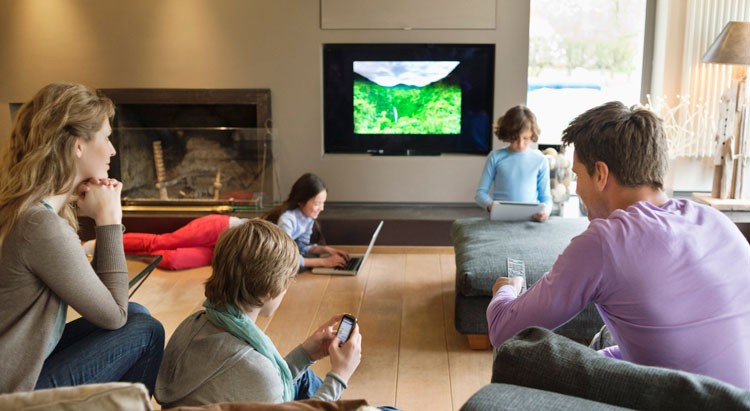
Fifty-five per cent of New Zealanders are now using multiple screens while watching TV, up from a global figure of just 48%.
While New Zealanders’ love affair with television endures, TV sets alone are no longer enough to satisfy Kiwis appetite for content, driving the growth of online media and screen-stacking – the use of multiple digital devices at the same time, according to global research consultancy TNS.
TNS Connected Life 2014 survey of 55,000 internet users worldwide found that screen-stacking is becoming prevalent globally. The survey found that almost half of people (48%) globally who watch TV in the evening simultaneously engage in other digital activities, such as using social media, checking their emails or shopping online.
In New Zealand, over half of Kiwis are using more than one screen when watching TV in the evening (55%), and the trend is similar in Australia, where 50% of consumers take part in screen-stacking. In comparison, within APAC Japanese internet users screen-stack at the highest level of 79%, while the Chinese defy the trend, with only 37% percent of internet users partaking.
Multi-device ownership is fuelling the rise of the screen-stacking. New Zealanders now own approximately five digital devices each – similar to Australia, Japan, Germany and the UK. Growing demand for TV and video content on-the-go is also contributing to the trend.
The desire to access our favourite TV shows at all hours of the day is also driving online TV usage, which extends our access to them. Around 17% of Kiwis nationwide are heading online to watch videos. This relates to the trends picked up globally, as one quarter (25%) of the global internet users now watch content on a PC, laptop, tablet or mobile daily.
“In a world where multi-tasking is the norm, the context in which we watch TV is rapidly changing – it isn’t just on the sofa at home with no other digital distractions around us,” says TNS NZ director David Thomas.
“It is not surprising that we are seeing such a pronounced trend in New Zealand towards screen-stacking – the appetite for online content is significant and growing all the time.”
Many of the big global media companies are already taking advantage of growing online viewing trends, offering on-demand services such as BBC iPlayer, Hulu or HBO GO, which allow people to access premium content wherever they are through their phones or tablets. In New Zealand, media companies are also recognising this trend, offering online content such as TV On-demand by TVNZ and Sky Go.
“Many people around the world are still wedded to their TV sets, particularly when they are with their families and friends, and 69% of Kiwis still tune in to the box daily,” Thomas says.
“But while traditional TV still has its role to play, advertisers must adapt to our changing viewing habits. Online devices are offering more ways to access TV and video content, meaning that brands will need to adopt a more integrated online approach in order to engage consumers.
“There’s a real opportunity for those that understand how to really integrate their activity in our increasingly connected world.”
About TNS Connected Life
Connected Life is a leading global study of digital attitudes and behaviours of internet users across 50 countries, exploring how technology is transforming the lives of consumers across the world. It offers essential insight into the impact of the growing digital ecosystem on the media landscape.
Connected Life also uncovers new and exciting opportunities for marketers to connect with their consumers in this increasingly complex environment; it is a powerful tool that helps brands make better digital decisions.
The fieldwork was undertaken in all markets between March and June 2014.
More info at here.
Share this Post


